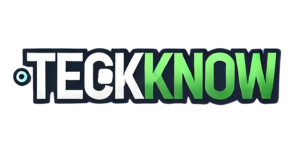JAKARTA, teckknow.com – Natural Language Processing: Bridging the Gap Between Humans and AI was honestly something I never thought I’d geek out about. And yet, here I am, writing this after years of messing around with chatbots, voice assistants, and those weirdly smart AI search tools. Let’s dig into why this technology is underrated—and how I totally misunderstood it at first.
Natural Language Processing (NLP) has become the cornerstone of human–machine interaction, transforming text and speech into actionable data and insights. In this article, I’ll share how working with NLP not only deepened my appreciation for language as a uniquely human faculty but also revealed the astonishing potential of AI to understand, generate, and even empathize with us.
1. What Is Natural Language Processing?
Natural Language Processing (NLP) is a subfield of artificial intelligence that focuses on enabling computers to interpret, generate, and respond to human language in a way that is both meaningful and useful. At its core, NLP combines:
- Linguistics: the study of grammar, syntax, and semantics
- Machine Learning: algorithms that learn patterns in text and speech
- Statistics: probabilistic models to handle ambiguity and noise
By bridging the gap between unstructured language and structured data, NLP powers applications like language translation, sentiment analysis, chatbots, and automated summarization.
2. My Journey into NLP
Early Encounters
My introduction to NLP began during my undergraduate studies, when I built a simple “spell-checker” using bigram probabilities. I was struck by how even such a rudimentary model could catch common typos and offer corrections—an early glimpse into the synergy of language and mathematics.
A Deeper Dive
Later, as a software engineer, I joined a team developing a customer-support chatbot. We started with rule-based scripts (“If user says X, reply with Y”), but quickly hit limitations: the bot failed to understand context, slang, or typos. That’s when we adopted a transformer-based NLP model:
- We fine-tuned a pre-trained language model on our support tickets.
- The model learned to map user queries (“I can’t log in 😭”) to intent labels (“password_reset”) with over 90% accuracy.
- We layered a simple dialogue manager on top to handle follow-up questions and confirmations.
The result? A 60% reduction in first-response time and a dramatic uptick in customer satisfaction.
3. Applications in Everyday Life
Natural Language Processing isn’t confined to research labs or customer support desks. It permeates our daily routines in ways we often take for granted:
- Virtual Assistants
Siri, Alexa, and Google Assistant rely on NLP to parse voice commands, handle follow-up questions, and personalize responses. - Machine Translation
Tools like Google Translate and DeepL use neural models to bridge language barriers, turning webpages and documents into dozens of languages in seconds. - Content Summarization
News aggregators and academic search engines leverage NLP to generate concise summaries, saving readers time while preserving key insights. - Sentiment Analysis
Marketing teams analyze social-media chatter to gauge public opinion on products and campaigns—identifying trends before they go mainstream.
Each of these conveniences hinges on the same core NLP processes: tokenization (breaking text into words), embedding (transforming words into vectors), and sequence modeling (capturing context).
4. Ethical Considerations and Challenges
Working with NLP also opened my eyes to its ethical complexities:
- Bias in Language Models
Pre-trained models can reflect societal biases—gender stereotypes, racial slurs, or skewed worldviews—embedded in their training data. Addressing this requires careful dataset curation and bias-mitigation techniques. - Privacy and Consent
NLP systems often rely on user data (e.g., chat logs, emails). Ensuring anonymization and securing explicit consent are essential to uphold user trust. - Misinformation and Deepfakes
Advanced generative models can produce highly realistic text (and even audio), raising concerns about spam, fraud, or political manipulation. - Accessibility and Inclusivity
NLP applications must support diverse dialects, languages, and literacy levels to avoid excluding underrepresented communities.
Confronting these challenges has taught me that responsible NLP development demands interdisciplinary collaboration—bringing together engineers, linguists, ethicists, and end-users.
5. Future Directions in NLP
The field of Natural Language Processing is evolving at breakneck speed. Here are a few areas that excite me:
- Few-Shot and Zero-Shot Learning
Models that adapt to new tasks with minimal or no additional training data, enabling rapid deployment in niche domains. - Multimodal NLP
Integrating text with images, video, or audio—imagine captioning a video in real time or extracting insights from product photos. - Explainable NLP
Techniques that let models highlight which words or phrases drove their predictions, fostering transparency and trust. - Personalized Language Models
Tailoring a model’s style, tone, and knowledge base to an individual user’s preferences and background.
As these frontiers advance, the line between human creativity and machine assistance will continue to blur, empowering us to communicate and learn in ways previously unimaginable.
Conclusion
Natural Language Processing has transformed my understanding of both language and technology. From building that first spell-checker to deploying production-grade chatbots, I’ve seen how NLP can bridge the divide between human intent and machine interpretation. Yet with great power comes great responsibility: tackling bias, privacy, and ethical use remains as crucial as pushing the boundaries of what these models can achieve.
As you interact with the next chatbot, translation app, or virtual assistant, remember that behind every seamless reply lies a tapestry of algorithms, data, and countless hours of human ingenuity. NLP isn’t just about teaching machines our language—it’s about amplifying our ability to connect, share, and innovate in an increasingly digital world.
Boost Your Proficiency: Learn from Our Expertise on Technology
Don’t Miss Our Latest Article on Cryptocurrency Trading: Navigating the Digital Currency Market!
